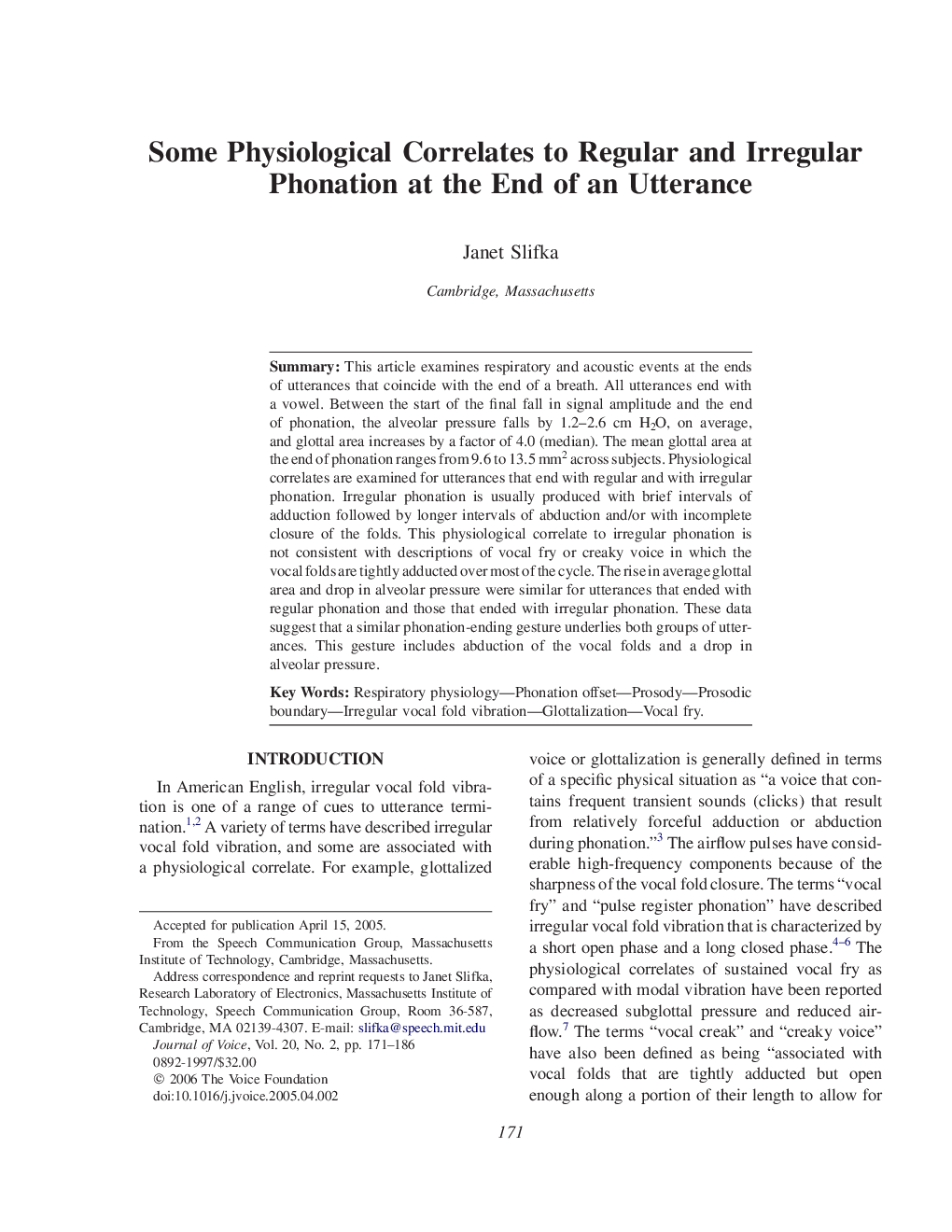| Article ID | Journal | Published Year | Pages | File Type |
|---|---|---|---|---|
| 1102445 | Journal of Voice | 2006 | 16 Pages |
SummaryThis article examines respiratory and acoustic events at the ends of utterances that coincide with the end of a breath. All utterances end with a vowel. Between the start of the final fall in signal amplitude and the end of phonation, the alveolar pressure falls by 1.2–2.6 cm H20, on average, and glottal area increases by a factor of 4.0 (median). The mean glottal area at the end of phonation ranges from 9.6 to 13.5 mm2 across subjects. Physiological correlates are examined for utterances that end with regular and with irregular phonation. Irregular phonation is usually produced with brief intervals of adduction followed by longer intervals of abduction and/or with incomplete closure of the folds. This physiological correlate to irregular phonation is not consistent with descriptions of vocal fry or creaky voice in which the vocal folds are tightly adducted over most of the cycle. The rise in average glottal area and drop in alveolar pressure were similar for utterances that ended with regular phonation and those that ended with irregular phonation. These data suggest that a similar phonation-ending gesture underlies both groups of utterances. This gesture includes abduction of the vocal folds and a drop in alveolar pressure.
